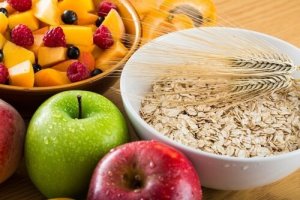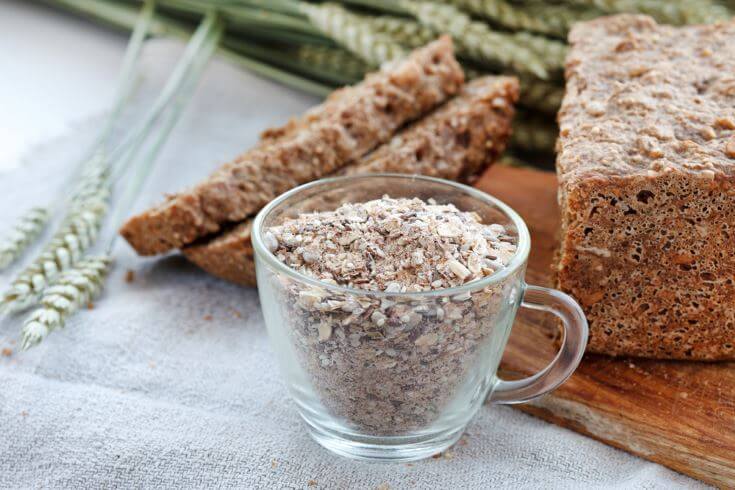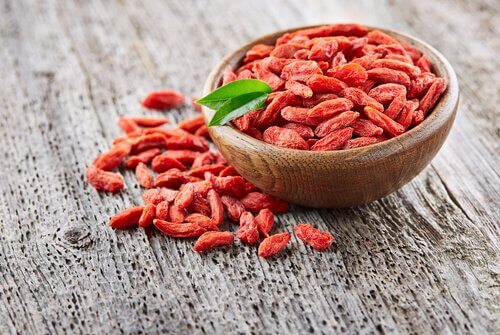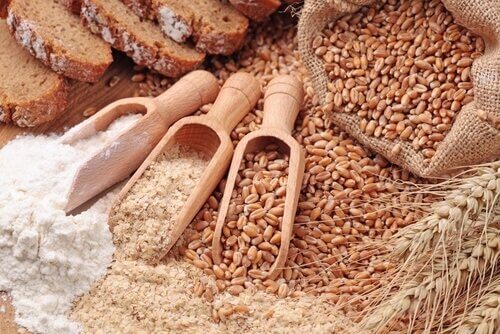Fiber-Packed Foods that Can Help You Lose Weight


Reviewed and approved by the doctor Karla Henríquez
Rather than eliminating foods, it’s a plan that aims to boost your diet by speeding up your metabolism. In this process, fiber is a huge help for weight loss because it doesn’t only keep us fill, but it also absorbs fats, sugars, thus reducing bad cholesterol (LDL).
You only need a small portion of fiber to lose weight. It’s exactly how you should start off this diet plan, in small steps.
If you suddenly begin to consume these foods in large quantities, your body will reject them, leaving you with bloating, gas and pain.
The benefits of fiber

A diet rich in fiber-packed foods will help you prevent many diseases. You won’t suffer from heart problems, high blood pressure, cancer or strokes. In addition, you’ll steer clear from type-2 diabetes. Plus, your blood sugar levels will be stable.
Many people often think that fiber-rich foods are flavorless. However, how they taste depends entirely on their preparation. There are so many fiber-filled options that the new combinations can delight both your palate and body.
These foods contain many nutrients that we need for a perky body and active mind. They’ll give you energy and you’ll be ready to face your daily routine.
Also read: 5 Things that You Can Do Every Day to Gain More Energy.
Two types of fiber
There are two types of fiber: soluble fiber and insoluble fiber. You should keep this in mind when you’re adding them to your diet. The general guideline is that you should consume equal portions of each kind.
Soluble fiber

This type of fiber helps prevent cardiovascular diseases, high cholesterol levels and plays an active role in digestion. The most common foods that contain soluble fiber are citric fruits such as oranges and lemons.
Insoluble fiber
This fiber works on our brain and mind. It gives us the feeling of feeling full and satisfied. We can find insoluble fiber in vegetables, whole grains and wheat fiber.
Tips for establishing a good diet
Any kind of change that you start in your body needs to be steady. Nothing should come suddenly. You should plan your diet in order to ensure positive results and prevent any kind of undesired effect.
If you follow these tips, you won’t have to face regrets later:
- Add fiber-packed foods to your diet gradually. By doing so, your stomach can adjust to the changes. If you change your diet all of the sudden, the first days will come with negative consequences such as gas, cramping and swelling. By adding fiber gradually, you can prevent these problems.
- You should be drinking plenty of fluids so your body can take in all the fiber that it’s receiving. Aim for at least eight glasses of water a day. Remember, you need to maximize the benefits of fiber.
- Take a cue from the food pyramid and eat plenty of fruits, grains and vegetables.
- Add five to nine portions of fruits and vegetables to your menu every day.
- Eat actual pieces of fruits and vegetables, not just juices.
- Nuts and beans are an excellent source of protein. Eat them three to five times a week. Replace meat with these foods and add them to your salads.
Five fiber-packed foods
The foods that can provide high amounts of fiber to your diet are endless. Here, we’ll talk about five of them so that you can recognize them:
1. Vegetables
If there’s one food group that can provide the amounts of fiber and other nutrients that our body needs, it’s the vegetable group. Vegetables shouldn’t be missing in your diet.
In addition, they help clean the body from all the toxins that sometimes hinder you from losing weight.
Berries

These fruits are a huge help for your health. They’re rich in antioxidants and will help you reach your goal weight. Berries are rich in fiber and make for an excellent option for combining with salads or eating as a snack.
Some options that you can include in your diet are:
- Grapes
- Strawberries
- Blackberries
- Raspberries
Visit this article: 7 Great Benefits of Eating Blackberries
Grains

To be specific, the trick lies in eating whole grains because they’re full of fiber. They regulate blood sugar levels and reduce the possible discomfort that can result from swelling. Whole grains are are important part of a weight-loss diet.
Nuts
These provide vitamin E and are one of the foods that provide the most amount of fiber.
Nuts give us energy and leave us feeling full.
The best types are:
- Almonds
- Hazelnuts
- Walnuts
- Peanuts
Beans
Beans are a wonderful source of fiber and protein, which is an essential combination for a body that runs smoothly. Combine them with whole-grain carbohydrates such rice or whole-wheat pasta.
By including fiber-filled foods in your diet, you won’t have to go on a restrictive diet. Just add them gradually to your diet and you’ll start feel fuller.
We can find fiber in most foods and, if you just know how to organize your daily diet, you’ll start feeling more satisfied at mealtimes.
All cited sources were thoroughly reviewed by our team to ensure their quality, reliability, currency, and validity. The bibliography of this article was considered reliable and of academic or scientific accuracy.
- Bianchi F., Larsen N., Mello Tieghi T., Tallarico Adorno MA., et al., Modulation of gut microbiota from obese individuals by in vitro fermentation of citrus pectin in combination with bifidobacterium longum BB 46. Appl Microbiol Biotechnol, 2018. 102 (20): 8827-8840.
- Harvard T. H. Chan. Fiber. Harvard School of Public Health.
- Howarth N. C, Saltzman E, et al. Dietary fiber and weight regulation. Nutritional Reviews. Mayo 2001. 59 (5): 129-39.
- Jovanosvski E, Mazhar N, et al. Can dietary viscous fiber affect body weight independently of an energy-restrictive diet? A systematic review and meta-analysis of randomized controlled trials. American Journal of Clinical Nutrition. Febrero 2020. 111 (2): 471-485.
- Makki K., Deehan EC., Walter J., Backhed F., The impact of dietary fiber on gut microbiota in host health and disease. Cell Host Microbe, 2018. 23 (6): 705-715.
- Smith H. j, Kemsley E. K, et al. Does prolonged chewing reduce food intake? Fletcherism revisited. Appetite. Agosto 2011. 57 (1): 295-298.
This text is provided for informational purposes only and does not replace consultation with a professional. If in doubt, consult your specialist.








